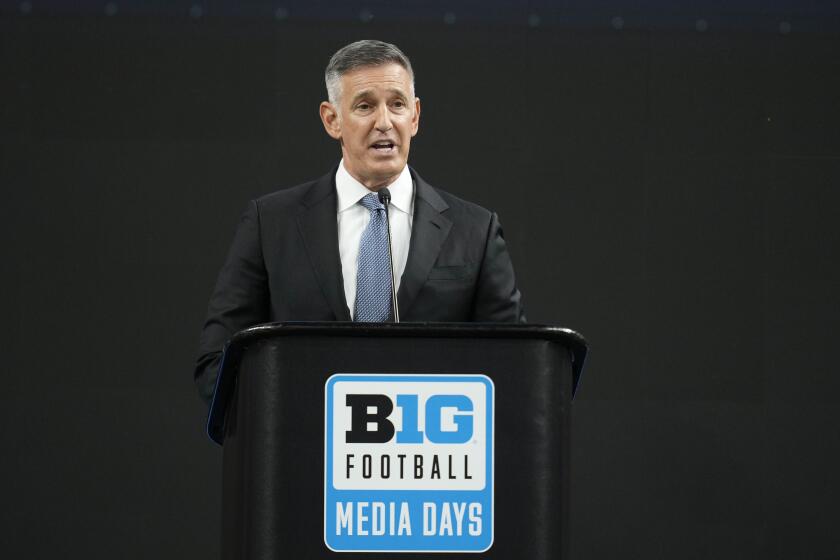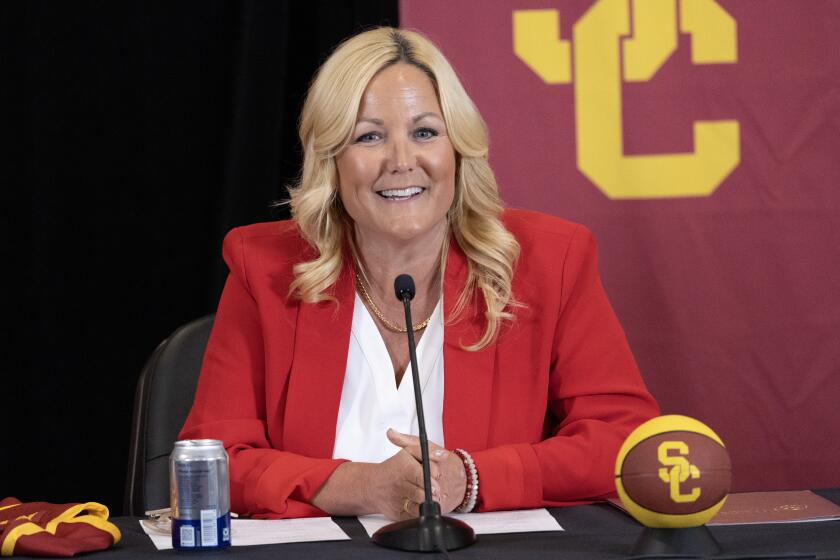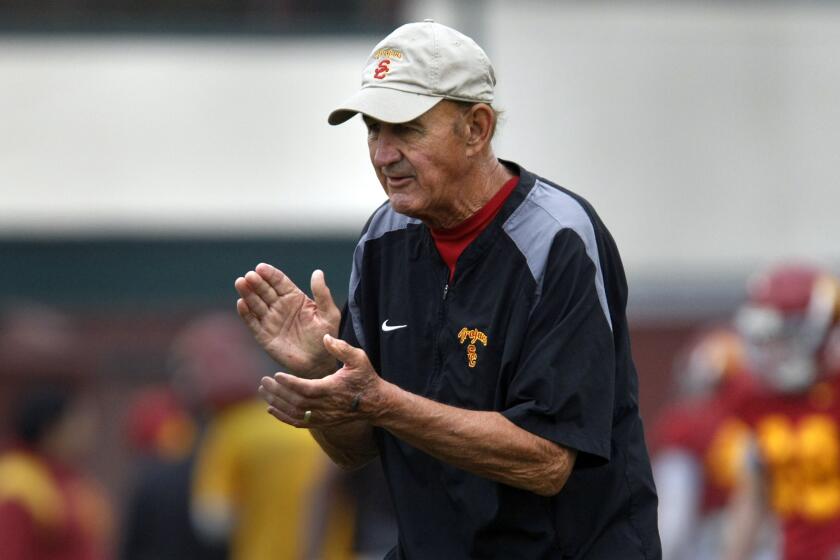Having missed out on Roses, Cal faces a thorn in Pac-10’s side
Followers of Pacific 10 Conference football hold these truths to be self-evident:
USC will go to a bowl every year under Pete Carroll.
Stanford’s Jim Harbaugh will say or do something to irk one of his coaching colleagues.
And Utah will be a cactus-sized thorn in the side.
The Utes are 6-3 against Pac-10 teams since the start of the 2003 season, with two of the victories coming against ranked opponents.
No. 23 Utah (9-3) hopes to pull rank for a change Wednesday evening at Qualcomm Stadium against California (8-4) in the Poinsettia Bowl. The Bears will play without star tailback Jahvid Best, who continues to be held out because of the concussion he suffered last month against Oregon State.
Back in August, Cal was hoping for a trip to Pasadena instead of San Diego. Then the season started, and the Bears looked alternately horrid in losses to USC and Oregon and unstoppable in victories over Washington State and UCLA. The inconsistency continued to the end of the regular season -- an upset of Stanford in the Big Game, followed by a 42-10 loss to Washington.
“Some weeks they really light it up and play exceptionally well and other weeks they’re not as consistent,” Utah Coach Kyle Whittingham said.
The Utes have been surprisingly consistent despite some key personnel losses. After finishing 13-0 last season with a victory over Alabama in the Sugar Bowl, Utah lost senior quarterback Brian Johnson, a few other players who departed early for the NFL and both coordinators. Offensive coordinator Andy Ludwig took the same post at Cal.
The Utes suffered another blow in September when top running back Matt Asiata was lost for the season because of a knee injury, and their offense was so stagnant in late October that they replaced junior quarterback Terrance Cain with Jordan Wynn, a freshman from Oceanside High. But the team persevered, winning at least nine games for a third consecutive season.
Whittingham credited his team’s success to the continuity that came from promoting coaches who were already part of his staff and the ability of another solid recruiting class to fill holes at key positions.
Though Utah’s roster includes 27 players from California, including 20 from Southern California, Whittingham concedes that none of those players were coveted by USC.
“They don’t recruit; they select,” Whittingham said of the Trojans. “It’s tough to go into Pac-10 territory and take players out of there that they’re recruiting very heavily.”
Among the players Utah was able to pluck from Southern California was free safety Robert Johnson, a senior who is generating NFL buzz. But Johnson’s route to Salt Lake City was hardly direct.
He was recruited by Washington at Los Angeles Fremont High, but poor grades forced him to enroll at L.A. Southwest College. It was there that Johnson impressed Utah assistant Kalani Sitake, who had come to scout one of Johnson’s teammates. Sitake offered Johnson a scholarship on the spot.
“When I told people I was going to Utah,” Robert Johnson said, “they would say, ‘What’s in Utah?’ ”
Plenty of success, it turns out. In his first start with the Utes, in September 2007, Johnson intercepted two passes and forced a fumble during a 44-6 victory over No. 11 UCLA.
A triumph over Cal would be a fitting bookend to his college career and extend Utah’s eight-game bowl winning streak, longest in the nation. It would also continue the Utes’ habit of pestering the Pac-10.
“We feel like we have to go out there and show that we can play with the big-time schools,” Johnson said.
Go beyond the scoreboard
Get the latest on L.A.'s teams in the daily Sports Report newsletter.
You may occasionally receive promotional content from the Los Angeles Times.




